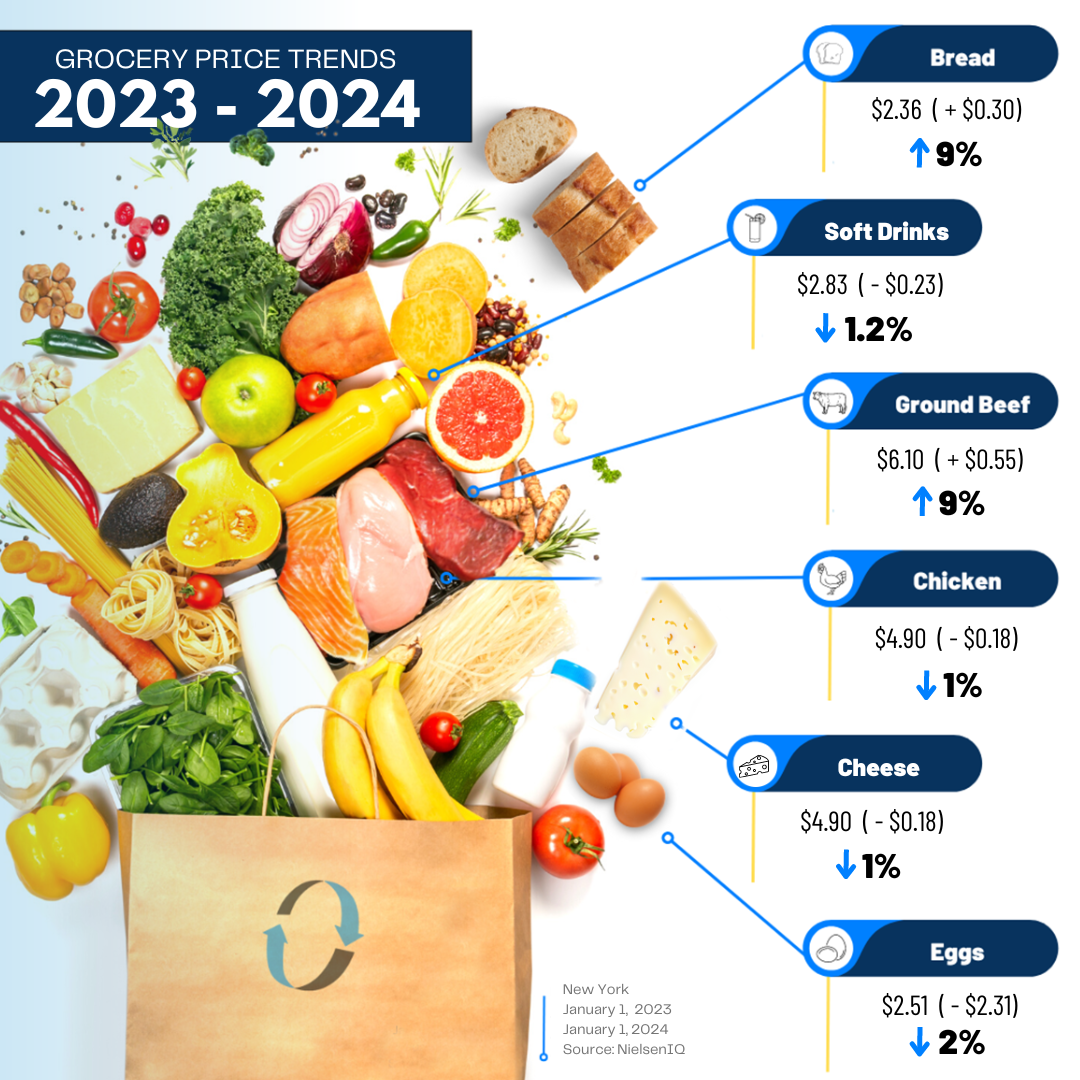Consumer inflation, specifically in the food and beverage space, is becoming increasingly problematic. While the percent of inflation (year over year increases of food prices this year at the retail level; grocery store and supermarket purchases) in 2023 is below previous years at 6.78%, the respective increases since 2019 are impactful (2020: 3.9%, 2021: 6.3% and 2022: 10.4%).
Food and beverage companies have been in a vicious struggle with rising cost of inputs to their businesses. And while suppliers, manufacturers, wholesalers and retailers alike had previously been reluctant to pass along price increases onto their customers, supply chain disruptions and increases in the cost of labor and energy has put maximum pressure on their profit margins. This has forced each participant in the supply chain to pass along increases downstream, compounding with each touch, ultimately to be borne as a price increase to the consumer.
Throughout the COVID-19 pandemic, and all the way up until January of this year, consumers continued to make discretionary food purchases at a record pace. Inflationary costs, however, have had a sobering effect on budgets and consumer spending, which has been reflected in retail sales and carried through in retail forecasts for the remainder of 2023.
Consumers are becoming less brand conscious and more price conscious; scrutinizing product labels, not only for nutritional information and ingredients, but also to determine packaged quantities and overall value. Food retail shoppers are down-shelving (purchasing lesser known or white boxed store brands that reside below the eye-level shelves that major brands occupy) to save money in the checkout line. In some cases, consumers are choosing to purchase outside of a traditional category (trading fresh for frozen for example) in order to reduce the overall grocery bill. Unfortunately, inflation is sticky, and unlikely to reverse anytime soon.
Added Costs in the Cold Chain
Food manufacturers, distributors, and retailers in who are responsible for the production and delivery of refrigerated or frozen products requiring strict temperature control face even more unique logistics issues.
One of the cost related factors is the cost of refrigerated transportation (reefer freight) is generally higher than that which is ambient (dry freight). While there are many reasons for this, the end result that the total delivered cost of food, which is generally a low value commodity, can be greatly impacted by rising freight costs.
The top five reasons refrigerated loads generally costs more do deliver on a per mile basis are:
- Cost of Capital Equipment – There is a higher barrier to entry for refrigerated carriers, including the higher cost of capital equipment. The refrigerated trailer cost more from the dealer and has a higher maintenance cost.
- Access to Refrigerated Capacity – Because of this, there are fewer refrigerated units than ambient, which increases volatility when demand spikes occur.
- Few Modal Options – Refrigerated intermodal or rail car because of extremely limited availability is generally not an option for time sensitive products to bleed off extra demand the truckload carriers can’t handle.
- Seasonal Demand – Refrigerated demand is more seasonal than ambient or dry demand as certain holidays (Thanksgiving turkeys), or growing seasons (spring/summer harvest) drive consumption.
- Market Imbalance – Equipment imbalances in seasonal growing areas or geographies create price differences (i.e. the growing regions are in rural agricultural areas, but the consumption areas are mainly in or near large centers of population). Driving equipment (deadheading) into the growing regions, hauling unloaded trailers, is a very expensive proposition.
How Food Shippers can Reduce Exposure to Carrier Related Inflationary Cost
Rising costs in the cold chain may seem beyond most shipper’s control. However, there are a few things they can do to mitigate their exposure:
- Become a Shipper of Choice – The three most valuable things a shipper can do to improve their relationship with a carrier and leverage cost are: reducing dwell at dock doors so that drivers can optimize their hours of service, plan one pick/one drop loads when possible, provide delivery flexibility.
- Provide Network Visibility – Especially relevant to seasonal shippers, enable better visibility to current and forecasted freight demand to provide carriers with more certainty, allowing them to ensure they make the capacity available for the truck to arrive at the right place, and at the right time.
- Focus on Network Alignment – Align freight to a carrier’s preferred lanes and backhaul needs. Carriers with a balanced network are significantly increasing operating efficiencies and cost savings with consistent volumes, fewer empty miles, and improved driver productivity.
To learn more about how Sonwil is the premier choice for food and beverage shippers, click here.


